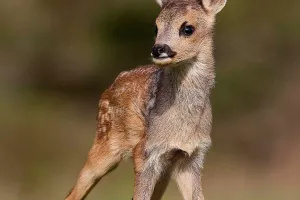Grey wolves are mammals, carnivores, and canines. It is commonly referred to as "wolf" in human society, and there are 38 subspecies. The body is medium and well-proportioned, with slender limbs and toes, conducive to fast running.
Inhabits forests, deserts, mountains, tundra, coniferous forests, grasslands.
Its morphological characteristics.
The grey wolf is the largest wild species of about 41 canids, with a total length of 1000-1300 mm from tip to tail in males and 870-1170 mm in females.
Tail length 350-520 mm. Male wolves weigh 30-80 kilograms, with an average of 55 kilograms, and female wolves weigh 23-55 kilograms, with an average of 45 kilograms. The distance from the sole of the foot to the shoulder is usually between 60-90 cm.
The size of its body depends mainly on the geographical location, and the distribution period varies greatly. The higher the latitude of the distribution, the larger the size of the gray wolf.
Female wolves are on average 20% smaller than male wolves. The largest wolves are found in Midwest Canada, Alaska, and throughout northern Asia, while the smallest tend to be located in the extreme south of the distribution, such as India.
Living habits of wolves.
Group life.
Wolves live in groups or alone. During the breeding season, wolves form small flocks, the size of which varies widely, usually depending on the season and predation activity.
Food.
The food composition of wolves is very complex, and all animals they can catch are their food, including birds, amphibians and small animals such as insects. Wolves also occasionally eat plant foods.
They can eat a lot, 10-15kg of food at a time.
They also have an amazing hunger tolerance, can go without food for up to 17 days with little or no food, and reduce energy expenditure by sleeping less and sleeping more.
Breeding method.
Breeding seasons are different, January in low latitude areas and April in high latitude areas, generally mating in February to March. The gestation period is 60-63 days, with about 4-7 pups per litter.
Speed.
The running speed is extremely fast, up to about 55 kilometers, and the durability is also very good.
Eyes, sense of smell.
Wolves have about 200 million olfactory cells, and humans have about 5 million, and they can smell a mile. Cubs are born with blue eyes that turn yellow after eight months.
Population status.
Wolves have small populations in some countries and are listed as endangered species. However, it is not listed as a protected animal in many countries.
Where there are wolves there are usually crows, and birds are well aware that if they are alone with wolves they will never go hungry because wolves always leave some leftover meat behind.


